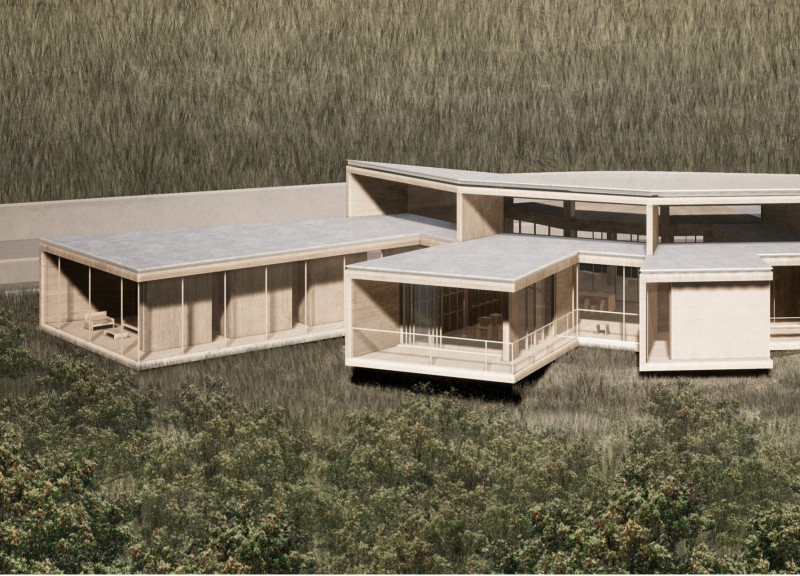5 key facts about this project
A key aspect of the architectural design is its focus on user experience, as it prioritizes accessibility and versatility. The layout is structured to encourage movement through open spaces that are strategically interspersed with more intimate gathering areas, which allows for both communal and private experiences. This approach reflects an understanding of the varied needs of the users, ensuring that the architecture serves as more than just a physical location but as a dynamic environment that supports a spectrum of activities.
The materiality of the project plays a crucial role in its aesthetic and functional outcomes. The use of [specific materials, e.g., concrete, glass, steel, wood] is not only visually appealing but also practical, as these materials are selected for their sustainability, durability, and ability to contribute to the overall energy efficiency of the building. The combination of natural and industrial materials results in a harmonious balance that reflects the character of the locale while fostering a contemporary architectural expression. For example, the incorporation of large glass panels maximizes natural light, reducing the reliance on artificial lighting, while providing sweeping views of the surroundings and creating a connection to the outdoors.
Unique design approaches are evident in various elements throughout the architecture. The incorporation of innovative structural solutions, such as [specific design features, e.g., cantilevered sections, green roofs, shaded outdoor areas], enhances the building's environmental performance and visual intrigue. Additionally, the attention to landscape design not only complements the building itself but also enriches the user experience by creating inviting outdoor spaces that encourage social interaction and relaxation.
In terms of aesthetic appeal, the project balances modern design principles with contextual sensitivity. The façade embodies a thoughtful composition of shapes and textures, creating visual interest without overwhelming the observer. The design embraces the surrounding context while providing a fresh perspective on contemporary architectural language. The project also includes features aimed at promoting sustainability, such as [mention any sustainable practices like rainwater harvesting systems or solar energy use], further underlining the commitment to responsible architecture that respects both the environment and the community.
This project reflects a deep understanding of the relationship between architecture and its environment, as well as the user. By exploring the intricate architectural plans, sections, and designs incorporated into the project, one can appreciate how these elements contribute to an overarching holistic vision. This architectural design not only addresses the functional requirements of its users but also aspires to be an integral element of the community, inviting exploration and engagement. It is a compelling example of how thoughtful architecture can foster connectivity while remaining anchored to its place. For those interested in delving deeper into the architectural ideas behind this project, examining the detailed designs and plans can provide valuable insights into its conception and realization.























